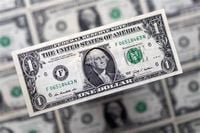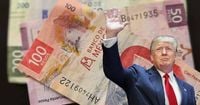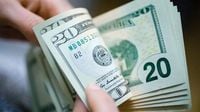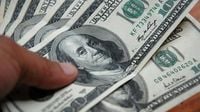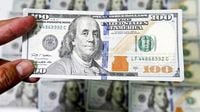The economic landscape in Venezuela continues to be marked by stark contrasts, particularly regarding the exchange rates of the official BCV dollar and the parallel dollar. As of March 26, 2025, the official dollar rate set by the Banco Central de Venezuela (BCV) is 68.39 bolívares per dollar, while the parallel market has seen the dollar rate soar to a staggering 99 bolívares per dollar, according to the Monitor Dólar.
This represents a significant gap of 39.7% between the two rates, which has raised concerns among economists and consumers alike. The BCV dollar has experienced fluctuations, with a reported increase of 0.45% on March 25, 2025, compared to the previous day, while the parallel dollar witnessed a more dramatic rise of 3.56% on the same day. This disparity is indicative of the ongoing economic challenges facing the country.
In the context of these fluctuating rates, the Venezuelan economy has seen a shift towards dollarization, with a reported 85% of salaries being paid in foreign currency during the first quarter of 2025, as noted by the Venezuelan Finance Observatory (OVF). This trend highlights the reliance on the dollar amidst hyperinflation and the devaluation of the bolívar.
As merchants grapple with the realities of these exchange rates, many are reportedly refusing to accept payments at the official BCV rate, citing the inability to absorb the losses incurred from the exchange rate differential. This has led to a variety of pricing strategies, including setting prices in euros or charging at the parallel rate, which has sparked frustration among consumers.
José Manuel Puente, an economist, expressed that the widening gap between the BCV and parallel dollar rates is detrimental to the economy, stating, "This situation leads to negative confrontations between merchants and citizens, with the real culprit being the government's poor macroeconomic management." He advocates for a coherent economic policy that could stabilize the currency situation.
To navigate the challenging economic landscape, experts suggest several strategies for businesses. These include adjusting prices according to the exchange rate differential, offering payment options in dollars, and negotiating better terms with suppliers to mitigate the impact of fluctuating exchange rates. Continuous monitoring of the exchange rate is crucial to avoid financial losses.
Meanwhile, in Mexico, the peso has also shown signs of depreciation against the US dollar. On March 25, 2025, the peso closed at 20.0566 units per dollar, reflecting a 0.16% decrease. Analysts from Pantheon Macroeconomics predict that the Bank of Mexico will reduce the key rate by 50 basis points in its upcoming meeting, a move aimed at stimulating the economy amid concerns of a potential technical recession.
The Mexican stock market, however, has shown resilience, with the S&P/BMV IPC index rising by 1% to 53,203.26 points, driven by gains in telecommunications stocks. Megacable shares surged by 4.89%, while Grupo Televisa saw a 3.71% increase. This divergence between the peso's performance and the stock market indicates a complex economic environment where investor sentiment remains cautious.
As the economic situation evolves, both Venezuela and Mexico face unique challenges and opportunities. The Venezuelan economy's heavy reliance on the dollar has created a dual currency system that complicates transactions and pricing, while Mexico's monetary policy adjustments aim to address economic slowdowns.
In Venezuela, the official dollar rate has seen a notable increase of 10.5% in January 2025 compared to the beginning of the year, followed by a 10.8% rise in February. Conversely, the parallel dollar market has surged significantly, with a reported 20.4% increase in March alone. These trends illustrate the volatility and unpredictability of the Venezuelan economy.
As the government grapples with these issues, the call for a unified exchange rate system grows louder. Economists argue that a single, free-floating exchange rate would provide more stability and predictability for businesses and consumers alike, aligning Venezuela more closely with economic practices in other Latin American countries.
In summary, the economic landscapes in Venezuela and Mexico are characterized by significant fluctuations in exchange rates, with both countries navigating complex challenges. As the situation develops, the focus remains on finding solutions that can stabilize their respective economies and improve the quality of life for their citizens.
